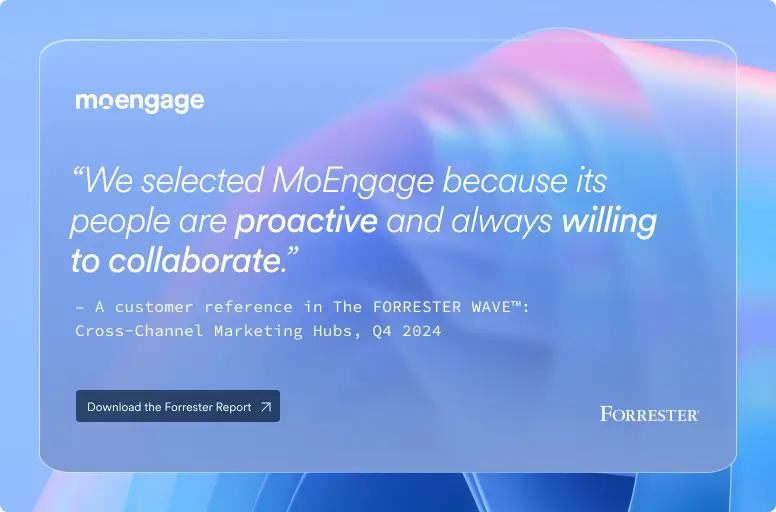Introduction
Marketing Automation can fuel growth for a Mobile-First company. But the question of how is lesser-known. To find out more, follow the conversation with Damandeep Singh Soni, Ex-CMO at Wecash and Mobikwik.
There are a few notable things that Damandeep talks about, starting from Customer Experience. First, he shares a few dos and don’ts and begins with explaining the issue of Scalability.
Customer Experience
Damandeep shares that technology helps make personalization for the user at a mass level possible and meaningful. If it happens manually, it becomes impossible. For example, users are more prone to respond to notifications than emails because they would like to avoid junk mail. But, a machine knows how to optimize both to enable the best user experience based on the user’s liking.
Plus, automation makes it easy for customers of any learning curve to pick up their pace in onboarding. One could opt for a tutorial, or one would not, based on their experience with the app.
How To Go About Automation?
There are new platforms available to the marketer daily. Therefore, before deciding how to automate, the bigger question presented becomes the organizational goals. It becomes essential to map out the marketing environment to understand what will help the team scale up. For example, is the goal more users or retention? That is a question that guides automation.
Singh answers the question about how to go about the same; He expressed that companies should start small and focus on one solution to really make a difference. He shared his experience from Mobikwik when the team thought that automating everything will be helpful to funnel it all, and from there, begin the journey. Another wisdom piece shared was having a scalable system.
A golden piece of advice shared is getting the right stakeholder buy-in. More than the CEO, get the CTO and product team on board. Product teams need to work with marketing and growth teams and invest in training across the board.
The next step after setup is complete would be to experiment. Do tests, ideate, look at the data, and from there on, you create a robust environment by designing and redesigning campaigns. The system works well only because of the design campaigns and how good they are.
How To Drive Collaboration?
Develop Growth Pods. Get a single engineer, a product manager, and an analyst together in a room and ask them to start developing scalable processes. This ensures results within 24 hours. One should go for the ‘low hanging fruit’ in the words of Soni, as it sets the pace for scale.
How Should A Company Invest In To Create a Martech Team?
Small setups can have 2-3 members in a team that take care of growth. As one setup grows and a product-market fit is seen, the leadership needs to be added to a martech stack to create a data-driven marketing culture. This is a crucial aspect of the same.
What Does A Growth Team Look Like?
There will be a growth leader or a manager who is, of course, the head of the team. A product marketing manager who can add things to the product that features growth goes beyond the conventional roadmap. Of course, an engineer or full-stack developer is also core to the team. Also, a marketing specialist needs to know how your product needs to be presented. Another profile to be added is the data analyst to study user journeys and behaviors to draw up funnels. Lastly, UX is an essential aspect of applications as the user’s experience is at the core. So you start small and then scale up with the team as your business scales up.
What Talent Should One look For?
Culture is important when developing the team. Individual strengths are enhanced when the team is data-driven, and that keeps the momentum alive. You need employees who test and question everything, who like to experiment. The talent should have the skill of being people-first and be data-driven. Thus, they should be flexible to change when the situation demands it.
How Do You Overcome Data Paralysis?
The answer to this is — “And Then What?” says Soni. He shares that one needs to be convinced about these points to work with any data because data in today’s world is served on a platter. Thus, one needs to go beyond the idea of having data or using data for the sake of having or using data. However, do ask for data so one can build up intuition.
Finally, have a growth mindset that includes the 5 components, namely: learning, challenging assumptions, engaging in internal resources and recognizing contributions, forgo blame, and develop experimentation.











